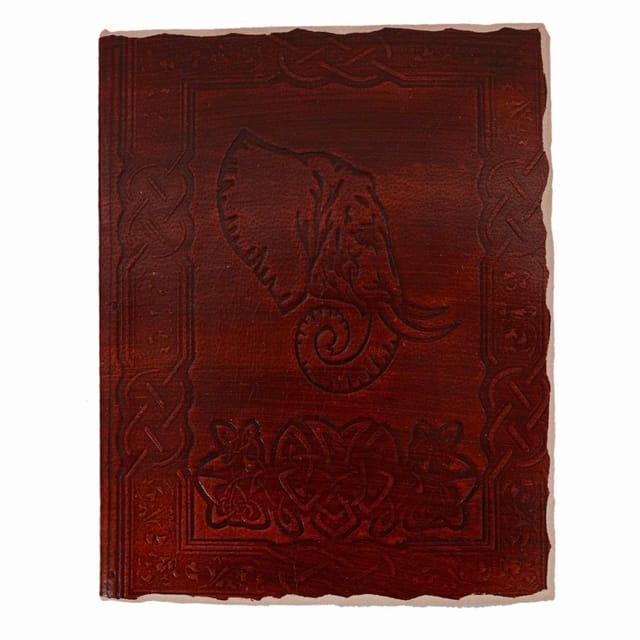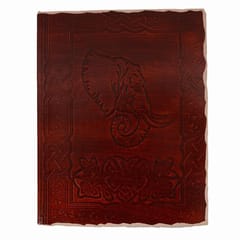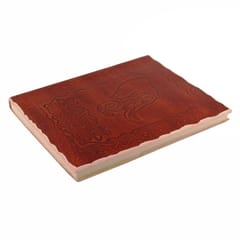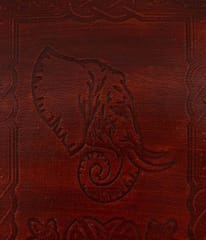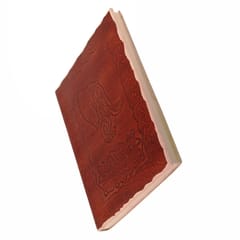- Home
- Leather Journal (Diary Notebook) 'African Safari': Handmade Paper In Deckle Edge Leather Cover With Unique Chipped Borders For Corporate Gift Or Personal Memoir (11122)
Leather Journal (Diary Notebook) 'African Safari': Handmade Paper In Deckle Edge Leather Cover With Unique Chipped Borders For Corporate Gift Or Personal Memoir (11122)
₹839
Selling Price 16% OFF
Leather Journal (Diary Notebook) 'African Safari': Handmade Paper In Deckle Edge Leather Cover With Unique Chipped Borders For Corporate Gift Or Personal Memoir (11122)
16% OFF
QTY :
Journal of handmade paper with leather cover with chipped edges and embossing of an elephant's head. The diary contains 144 pages (counting each side)
Any paper with a feathered edge is described as having a deckle edge, in contrast to a cut edge.
Before the 19th century, the deckle edge was unavoidable, a natural artifact of the paper-making process in which sheets of paper were made individually on a deckle. The deckle could not make a perfect seal against the screen at the edges and the paper slurry would seep under, creating a rough edge to the paper.
With the appearance of smooth edges in the 19th century, the deckle edge slowly emerged as a status symbol. Many modern readers are unfamiliar with the deckle edge and may see it as a defect, but it's actually a deliberate design.
- Unique worn out vintage leather journal in antique design (deckle edge on the cover is not a flaw, but a deliberate design to magnify vintage appeal)
- Dimensions: 7*5 inches; Printed front and back side; Comes with 144 pages (counting each side) of unruled naturally treated paper
- Handmade paper with real fire-burnt edges; Brings out the creative side of your personality
- Handcrafted out of the finest quality of leather and paper
- Highly durable & functional, this classy journal can be used for writing, noting, jotting, sketching, doodling or recording personal as well as professional activities
Description of product
Journal of handmade paper with leather cover with chipped edges and embossing of an elephant's head. The diary contains 144 pages (counting each side)
Any paper with a feathered edge is described as having a deckle edge, in contrast to a cut edge.
Before the 19th century, the deckle edge was unavoidable, a natural artifact of the paper-making process in which sheets of paper were made individually on a deckle. The deckle could not make a perfect seal against the screen at the edges and the paper slurry would seep under, creating a rough edge to the paper.
With the appearance of smooth edges in the 19th century, the deckle edge slowly emerged as a status symbol. Many modern readers are unfamiliar with the deckle edge and may see it as a defect, but it's actually a deliberate design.
- Unique worn out vintage leather journal in antique design (deckle edge on the cover is not a flaw, but a deliberate design to magnify vintage appeal)
- Dimensions: 7*5 inches; Printed front and back side; Comes with 144 pages (counting each side) of unruled naturally treated paper
- Handmade paper with real fire-burnt edges; Brings out the creative side of your personality
- Handcrafted out of the finest quality of leather and paper
- Highly durable & functional, this classy journal can be used for writing, noting, jotting, sketching, doodling or recording personal as well as professional activities
Related products
CONTACT
# 303 Sector 28
Gurgaon
Haryana - 122002
IN
+919958881193
+919958881193 [email protected]

